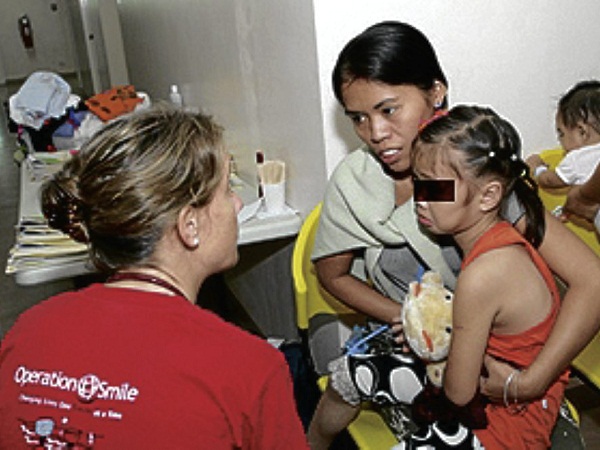Removing the scarring physically, emotionally

CLEFT lip or cleft palate can present a number of obstacles for children and young adults, including possible feeding issues, dental and orthodontic problems, speech and language difficulties, hearing impairments as well as social and self-esteem challenges.
CLEFT LIP and cleft palate may occur together or separately in a newborn child. While it is completely normal for the parents to feel sad, overwhelmed and upset, everyone in the household should remember to try to focus on the child as a person, not on his or her cleft.
One should remember that clefts are birth defects caused by incomplete development during early fetal formation and are one of the most common major birth defects.
While helping the child gain confidence—by allowing him or her to make decisions, encouraging confident body language such as smiling, and holding his or her head up and shoulders back—parents should realize that a series of surgeries can restore a child’s normal function and achieve a more normal appearance with minimal scarring.
Each year in the Philippines, one in every 500 babies is born with cleft lip, palate or both. This means that around 4,004 Filipinos out of 2,064 million born every year have this deformity.
A report from the Philippine Birth Defect Registry—a partnership of the Department of Health and the United States National Institute of Health’s Institute of Human Genetics—said cleft lip and palates are among the top 12 birth defects in the country.
It is for this reason that Operation Smile was founded in the country 31 years ago.
Founder
Since then, its founder Dr. William Magee Jr., a leading plastic and craniofacial surgeon, and wife Kathleen have teamed up with other leading experts (who volunteered for the mission) in performing operations on over 200,000 children and young adults from all over the world.
In the Philippines, over 24,000 surgeries have been performed.
On its 31st anniversary, Operation Smile teamed up with A. Menarini Philippines Inc., makers of Dermatix, a leading brand in reducing as well as removing signs of scars.
According to A. Menarini Philippines, the impact of a healed smile has a much broader effect as it changes the family and the community in which persons with cleft lip or palate live. With the company’s trusts so closely aligned with Operation Smile, the partnership is perfect in alleviating the lives of young Filipinos afflicted with a condition that affects socioemotional functioning.
Indeed, addressing cleft lip or cleft palate is important as the condition can present a number of obstacles for children and young adults, including possible feeding issues, dental and orthodontic problems, speech and language difficulties, hearing impairments as well as social and self-esteem challenges
JS, a 10-year-old child, who became one of the recipients of the mission, used to start a fight whenever he was not understood when talking. Twenty-six-year-old JD understood this difficulty which, in fact, was the reason he left his previous job. Fortunately, he found out about Operation Smile and is looking forward to landing a much better job because of a successful operation.
Researchers believe that most cases of cleft lip and cleft palate are caused by an interaction of genetics (resulting from an error in the genes) and environmental factors although in many babies, a definite cause is still not discovered.
Cleft lip and cleft palate may be more likely to occur in pregnant women who take certain medications, use tobacco or alcohol, and suffer from vitamin deficiency or viral illness.
